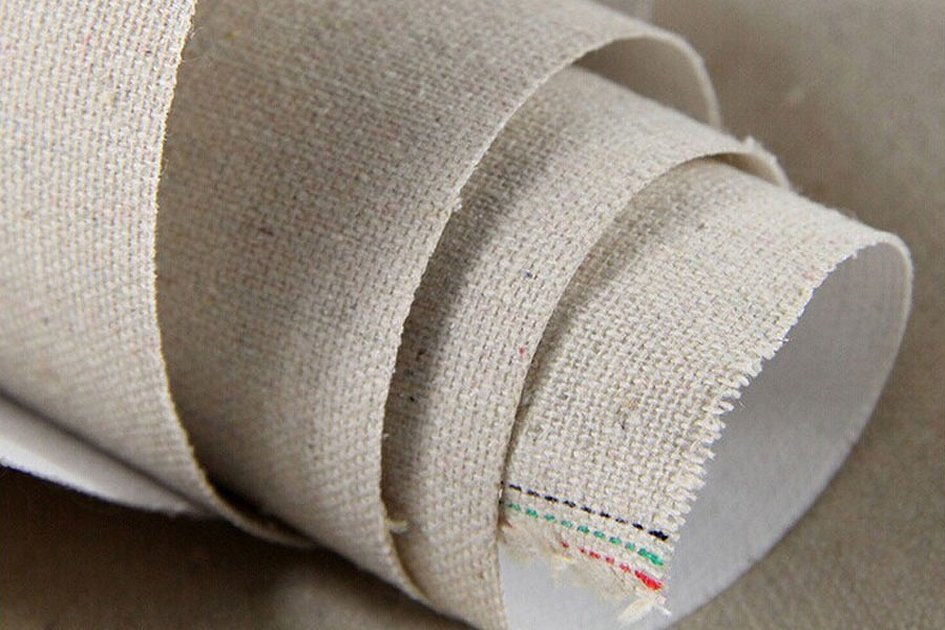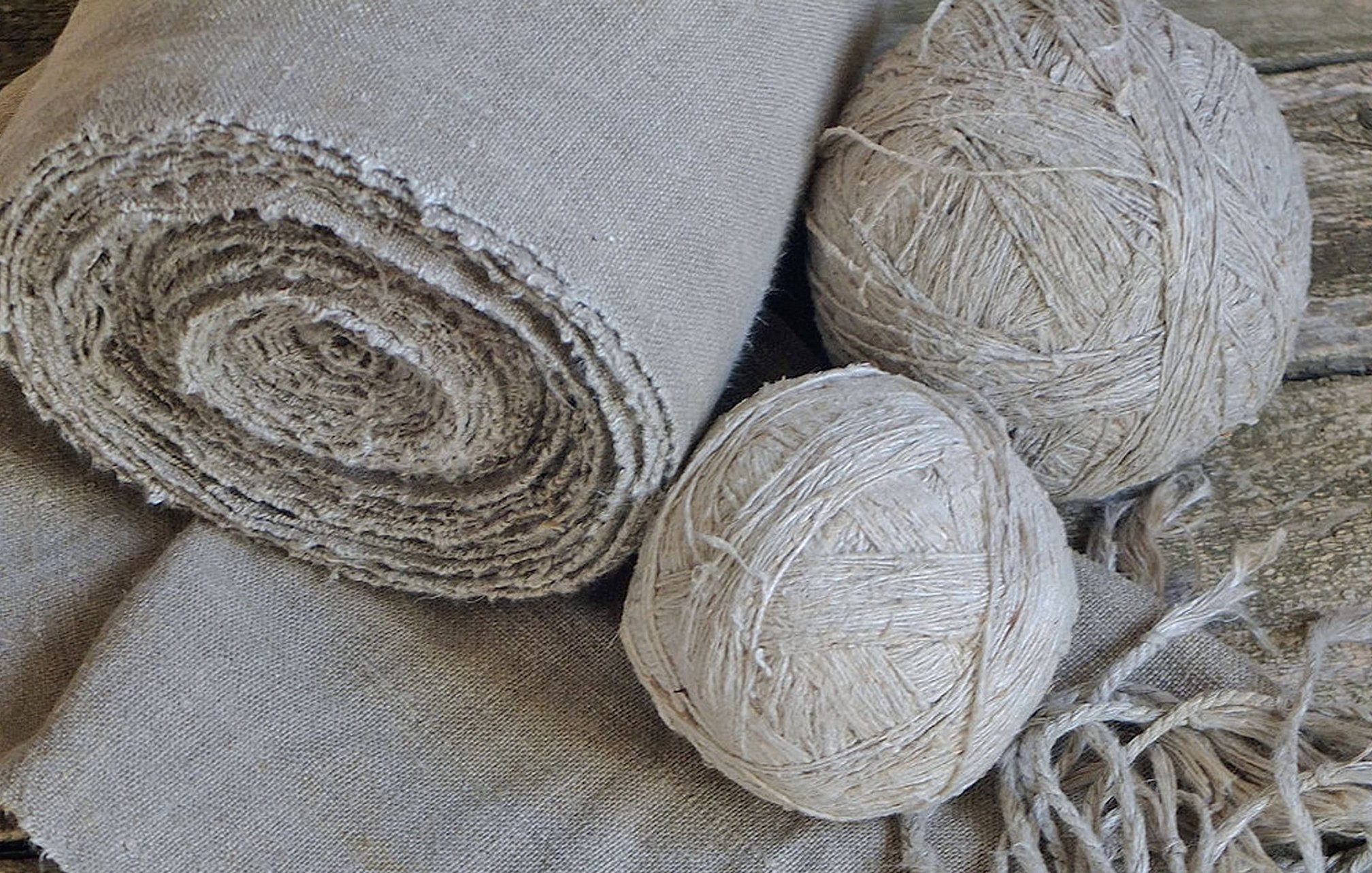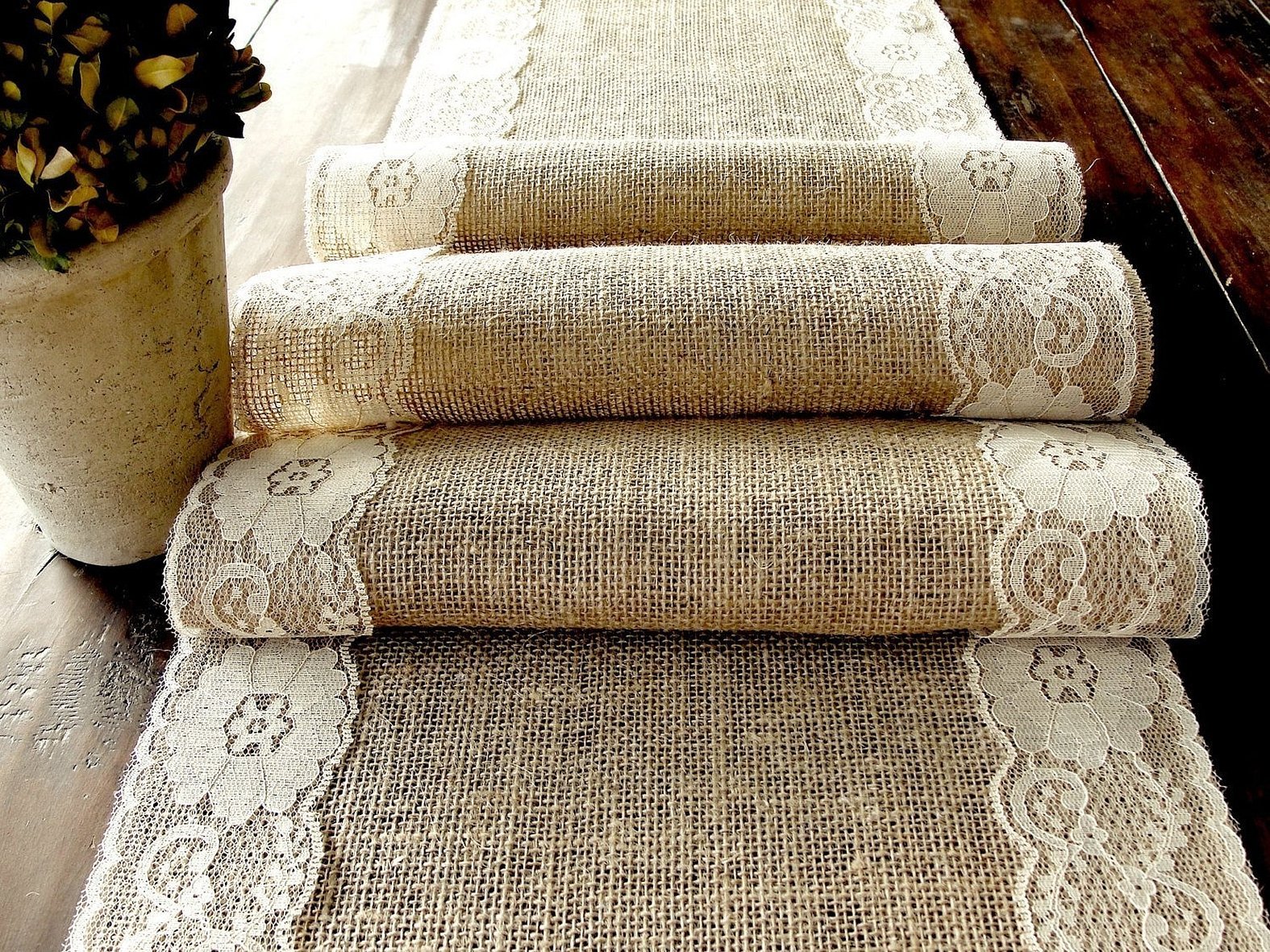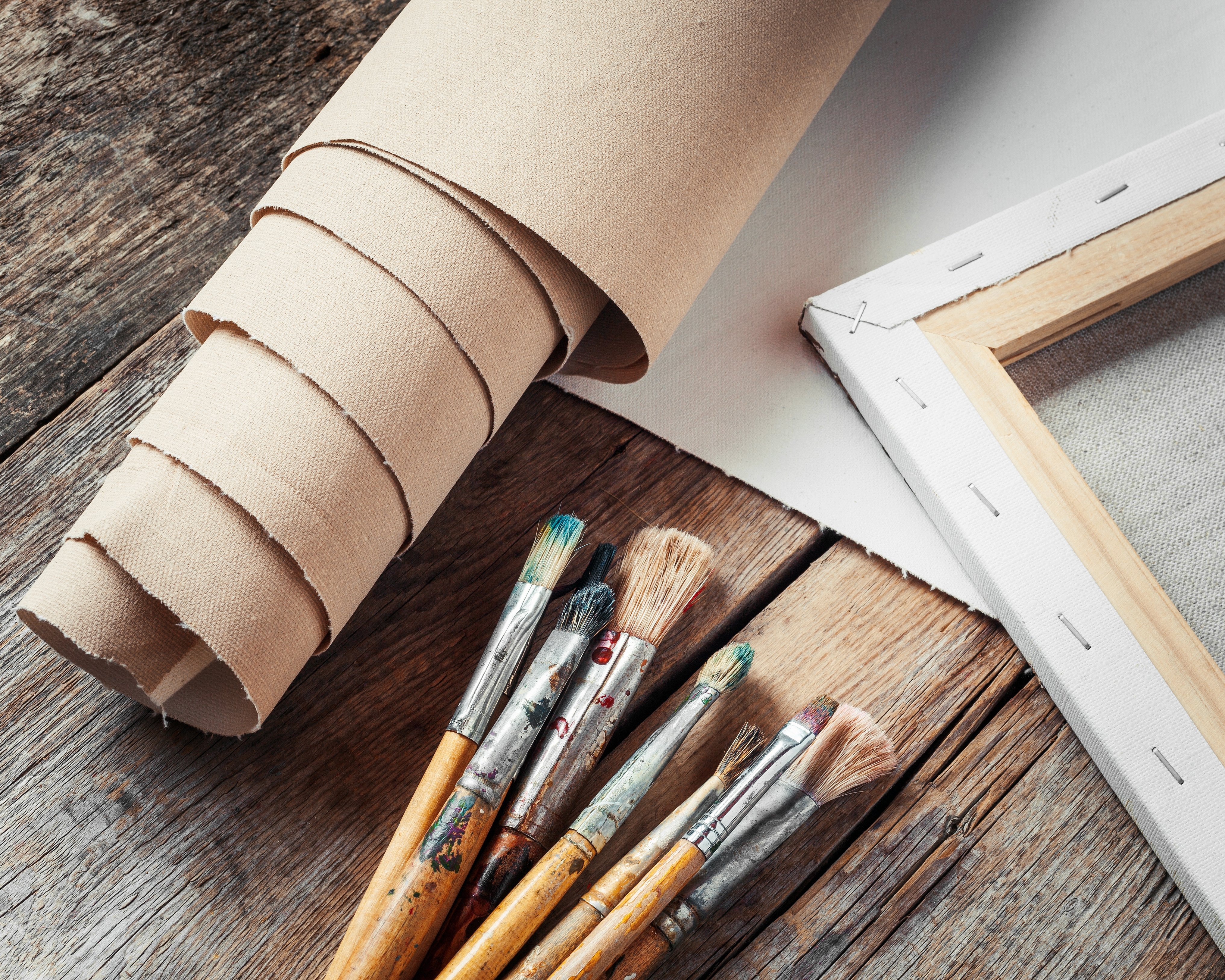Canvas and painting are so closely related that the painting itself is often called canvas. This is not entirely true, since this material can be used not only for painting, it has many other applications. So, canvas - what is it and how to choose it correctly?
What is canvas
Initially, this was the name given to linen fabric, varying in the degree of bleaching and thickness, made using the linen method. The most valuable was considered to be thin white linen, clothes from which were sewn for noble and wealthy people.

What is canvas made of?
In the modern textile industry, the name "canvas" refers to dense materials made using the plain weave method and having undergone various stages of finishing. Traditionally, the raw materials for them are plant, synthetic or mixed fibers, namely:
- flax;
- cotton;
- jute;
- hemp;
- synthetic - polyamide, polyester, polypropylene;
- a combination of cotton or linen with synthetics.

The natural composition canvas has the following properties:
- durability and strength;
- air permeability;
- absence of allergic reactions;
- resistance to pollution;
- strength.
Important information! The material is quite hard to the touch, has a not very attractive appearance, and has a gray-yellow tint. Medium and low-density fabrics are suitable for everyday wear, which become softer and whiter with each wash.
Synthetic and mixed materials are even more durable, but they do not tolerate high temperatures well and may even melt. In addition, they practically do not absorb moisture, which is a significant drawback when used for sewing clothes and making home care products.
What is canvas for?
Natural canvas is especially popular in the production of ethnic clothing and accessories. Embroidery on clothing, tablecloths and pillowcases brings a rural touch to the overall atmosphere.

Synthetic fabrics are mainly used for transporting cargo, mail, and bulk products. Due to the moisture resistance of the artificial packaging material, the goods do not spoil for a long time. Canvas gift packaging for souvenirs, dishes, and toys is in great demand.

In addition, canvas is a type of fabric on which paintings are painted. Paintings on canvas are easier to transport, they can be rolled up. The canvas base is more durable and cheaper than wood, it allows you to create large-sized paintings.

History of the material
The first linen canvas was woven in ancient Egypt, and in Europe the oldest find dates back to the 8th century BC. In central Russia, hemp canvas with a yellowish tint was more famous. Compared to flax, this canvas is denser and rougher, but also more wear-resistant. The material was even a kind of monetary equivalent - peasants paid quitrent in rolls of linen.
Hemp and linen materials were used to make a variety of clothing, home textiles, containers for storing and transporting materials, bags, shoes, and sails.
Canvas is actively used in painting as a base for a picture. In Western Europe, this happened back in the 16th century, when a woven canvas stretched on a stretcher replaced the wooden base. But even earlier, ancient Russian icon painters used it for small icons - "towels". Usually, two pieces of canvas glued together were used as a base for them. Both sides were covered with a special composition, primed and used for working with oil paints.

How to Choose a Canvas for Painting
Canvas is necessary for painting with oils. The right canvas for painting can be purchased at an art store, not a fabric store.
Canvas for painting is available for sale in three types:
- on a subframe;
- on cardboard;
- in a roll.
The canvas can be removed from the stretcher at any time if transportation is required, and then stretched again. In addition, the canvas "springs" a little on the stretcher, which somewhat facilitates the process of applying paint. For large paintings, additional slats are used in the stretcher, which give rigidity to the entire structure, the painting will not sag. The canvas on a cardboard base is thin, it is impossible to adjust the tension for it.

The canvas itself can be made from cotton, linen or synthetic fibers.
Flax
According to artists, the best material for making canvas is flax. A quality canvas should be uniform, without spots, stripes, or knots on the fibers. The threads should be stretched parallel.
Advantages of linen fabric:
- absorbs little moisture;
- less susceptible to mechanical damage;
- practically does not sag over time.
Important information! The disadvantages are the high price and the large weight of the canvas.
Cotton
The most accessible material for artists. The canvas "obeys" the author and obeys any technique in working with oil.
Advantages of cotton fabric:
- affordable price;
- With high-quality tension, you can work with acrylic and oil paints.
Flaws:
- accumulates moisture;
- does not tolerate mechanical stress well;
- sags over time.
Synthetics
Synthetic canvases are very rare on sale, many salons do not risk ordering them due to low demand. However, they have several advantages:
- have an absolutely smooth surface;
- do not sag under the weight of paints;
- do not rot and do not absorb moisture.
Important information! Since not enough time has passed since the appearance of synthetic canvases, it is not yet possible to evaluate them objectively.
The canvases differ in the degree of graininess:
- fine-grained - the smoothest canvas, suitable for painting portraits and for working with liquid paints;
- medium-grained - universal base, can be used for various techniques;
- coarse-grained - more suitable for textured painting, you will need a palette knife for work, it will be inconvenient to work with brushes on relief fabric.

Important. Oil paint is applied only to a primed canvas. You can buy a pre-prepared, primed base, or do the priming yourself.
Peculiarities of painting on canvas
Before you start painting, you need to prepare the base for the painting and the tools.
- The canvas itself, no matter what it is made of, must be secured to a stretcher and primed if it is not primed in advance. Then, it must be installed vertically on an easel - a special stand.
- The next step is mixing the paints on the palette until the desired shade is obtained. The paints are mixed with a special metal spatula with a wooden handle - a palette knife.
- Brushes should be hard, made of elastic bristles. They are convenient for applying thick strokes and adding volume.
- For adjustments and corrections you will need a rubber scraper or a damp cloth.
Peculiarities of applying oil to canvas
Each layer of paint should be the same thickness as the previous one, or slightly thicker, otherwise the painting will crack. The layer should dry completely before the next one is applied, otherwise the image will smear and look "dirty".
The duration of work with oil is no more than 12 hours in a row, after which the painting must be left to dry. There is no special requirement for the order of painting, you can start working from any place. In order to evaluate the compatibility of colors with each other, it is best to apply the lightest and darkest area and then compare the shades with them.

How to care
The basic rules for the care and storage of canvas paintings are as follows:
- There should be no sudden changes in temperature and humidity in the room, as the canvas may dry out or become soggy.
- Paintings should not be placed near incandescent lamps or heating devices.
- Oil paintings on canvas should not be placed under glass. Glass enhances the effect of sunlight, acts as a "lens", and also creates a greenhouse effect and increases the humidity on the surface of the canvas.
- Do not clean paintings with solvents, detergents or even just water. To remove dust, you can use a brush with soft bristles or a special broom. It is necessary to clean not only the front side of the painting, but also the back. In case of heavy contamination, it is permissible to use an ammonia solution.

Care of canvas products
Natural canvas products can be washed, they tolerate both hand and machine washing well, you can use fabric softeners. You can iron and steam at high temperatures.
Synthetic items can be machine washed, but the temperature should not be higher than 30°C, and they can be ironed on a delicate setting.
Rough material used for packaging and transporting goods is usually not washed; it is enough to simply shake and dry the product well.
Canvas is undoubtedly a durable material. Many paintings painted on canvas have successfully passed the serious test of time, having withstood more than one century. But you need to choose the base for them carefully.




